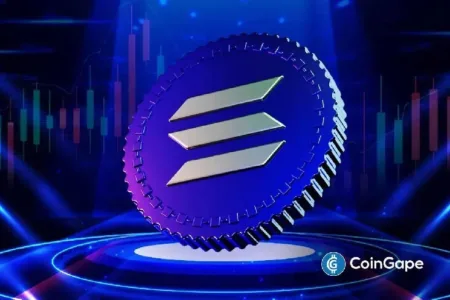Since yesterday, the Binance card, which is the Visa debit card that can be funded with the Binance spot wallet, is no longer usable in Europe.
Just yesterday, in fact, the exchange sent an email to all European holders of the Binance Visa debit card, notifying them that the Binance card program issued by UAB “Finansinės paslaugos, Contis” has ended.
Obviously, he had warned well in advance, so no user was caught off guard, but since it was widely used, now many people have to look for an alternative.
The Binance signed debit card
In the email, Binance invited users to immediately destroy the card by cutting through the chip and magnetic strip, and reminded them that there was nothing else to do.
In addition, it emphasized that no fiat currency or cryptocurrency present in the Binance account would be lost, as the termination of the program had no effect on the Binance account. This is an event that only impacts the use of the card.
The message also indicated that additional information can be found on the FAQ section of the exchange’s website, under the “Binance Customer Support (solarisgroup.it)” section, regarding possible complaints, or it invited to directly contact Solaris.
The operation of the Binance card was very simple.
Once obtained, it allowed to make expenses worldwide by paying in fiat currency on the Visa network. The funds for the payments were withdrawn from the user’s spot wallet on Binance, specifically from the balances of certain specific cryptocurrencies, including Bitcoin, Ethereum, and stablecoin.
At the time of payment, the crypto funds to be used were automatically sold in fiat currency at the market price in order to use the proceeds to make the payment in fiat currency.
Alternatives to Binance Card
Actually, there are many exchanges or crypto services that offer Visa or Mastercard debit cards that can be loaded with cryptocurrencies.
Today they are by far one of the most used systems by those who own cryptocurrencies to make fiat payments.
The important thing, in order to be able to use them, is to have sufficient funds on the wallets that power the card, making sure that they are not blocked or immobilized and that they are crypto or tokens actually usable for the service.
However, not all exchanges offer this service, so unfortunately there are very few that allow BTC transactions via the Lightning Network and reloadable debit cards in cryptocurrencies at the same time.
Exchange cards
Among the most used exchanges to power crypto debit cards, Coinbase, Crypto.com, and Bybit should be mentioned.
The Crypto.com one has been in use for several years, and many people use it.
However, lately the use of Bybit’s platform is also becoming very popular.
Coinbase is undoubtedly one of the most widely used crypto exchanges in the world, so it is safe to assume that many people also use their card.
It should be remembered that at the beginning of 2024, Bitget’s launch is also expected.
Among the main exchanges, it is also worth mentioning Bitpanda, while among the minor ones Uphold should be mentioned.
Crypto service cards: not just the Binance card
However, it is not only the actual crypto exchanges that offer this service.
For example, outside of exchanges, those of Nexo and Wirex are widely used, which by the way was one of the very first to be launched.
In the USA, Venmo and PayPal are also widely used, which now also allow for crypto trading.
Two other cards that many recommend are the Ledger card and the Plutus card.
The features
It is difficult to establish a ranking of what can be considered the best, because such a judgment is subjective.
For example, many consider Coinbase’s card to be the current reference, but the costs of exchanging from crypto to fiat are not at all low, and for this reason there are quite a few who prefer Bybit’s card, for example.
What is convenient to do is personally analyze what are the characteristics that make them most interesting, or that constitute a problem.
First of all, it is necessary to distinguish between Visa and Mastercard, although nowadays they can often be used interchangeably without any problems.
Secondly, it is necessary to verify if there are any initial reception costs or maintenance costs. For example, the Binance card did not have any.
Such costs are sometimes indirect, such as when you are asked to immobilize a certain amount of tokens to obtain them.
One of the main features to evaluate are the fees and spreads, which are the costs on transactions.
If there are no costs on fiat payment, there are instead costs on the automatic exchange from crypto to fiat. There can be two types of costs: fees and spreads.
Fees are a fixed cost or a percentage per transaction, and are generally very limited. The problem often lies in the spread, which is the difference applied between the selling price of cryptocurrencies and their market value.
It is not very easy to identify, and often needs to be calculated, although when it comes to sales in fiat currencies it is not so difficult to calculate.
Another important feature to carefully evaluate are the limitations, because almost all cards have them, especially for spending limits.
Furthermore, it is also necessary to evaluate which cryptocurrencies can be used to fund them, because often not all can be used. It is also important to know if they can be funded directly with crypto held in the spot wallet, or if they can only be funded with fiat currencies obtained by selling cryptocurrencies previously.
KYC and custody
One inevitable feature, instead, is the KYC.
In other words, anyone who issues Visa or Mastercard cards must verify the user’s identity. This means that there should not be any crypto cards without KYC.
This means that even upstream, on the exchange or the crypto service used to power them, KYC should not be a problem, as doing it before or doing it later makes very little difference.
KYC also means AML (anti-money laundering) checks, and this can lead to limitations in the use of these cards.
In addition, there are very few non-custodial wallets that allow the use of funds to power crypto cards. There are some, but since the cards require identity verification, they are not particularly advantageous.
Just because the vast majority of crypto cards are based on custodial wallets, and given the AML limitations, it is not convenient to keep too many funds on the wallets used to feed them.
Read the full article here










